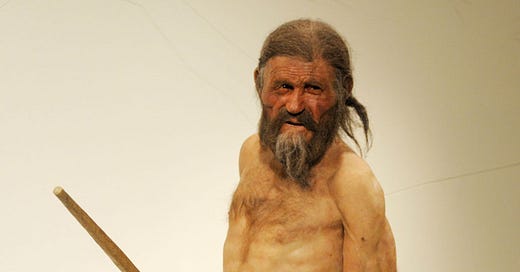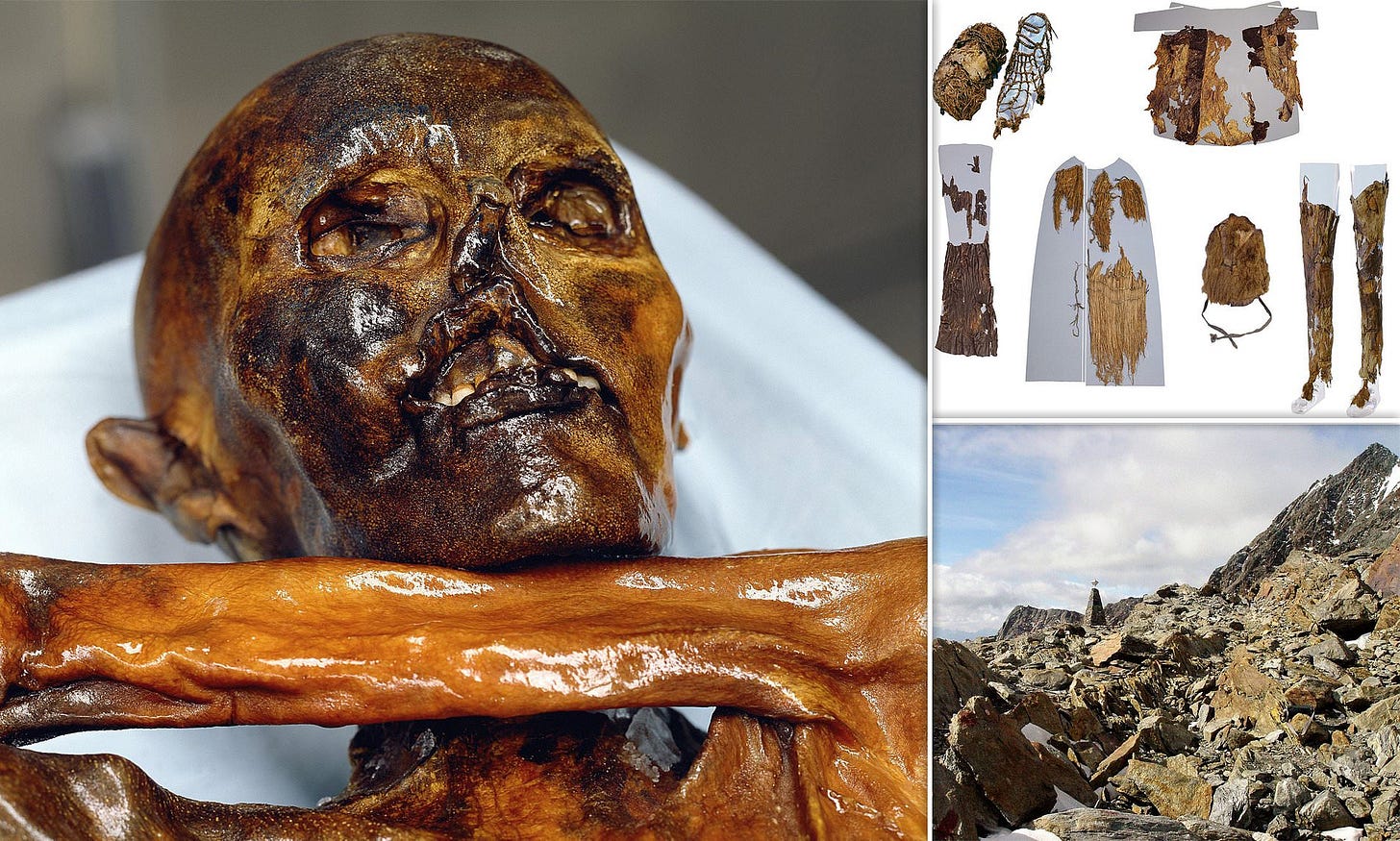The Fascinating Case of the Oldest Murder Mystery in History
The murder mystery of Ötzi, the iceman is 5,300 years old.
Who Killed him?
His frozen body, along with his clothing and equipment was found accidentally by hikers in 1991 in a remote area of the Oetztaler Alps in northern Italy.
At first glance, he just looked like a hiker who had fallen to his death. But then nobody had reported anybody ‘missing’ and approached the police to investigate. Then further details emerged later.
He was shot in the back with an arrow. The arrow hit the main artery and death was almost instantaneous. Is it murder? Who had killed him at this desolate location? One of Europe’s most renowned detectives, Chief Inspector Alex Horn was called to investigate the case.
To begin with, Alex had a well-preserved body before him and an untampered crime scene with all evidence scattered before him to enable him to easily get to the killer. For a man of Alex’s reputation, solving the case should be a child’s play.
Except that, it wasn’t.
The victim was one of the most perfectly preserved mummies ever found, belonging to the copper age some 5300 years ago. He was called Ötzi, the iceman. And Alex was engaged by the South Tyrol Museum to accomplish the most unenviable task in the world; to find out who killed the Iceman? Along with Alex was a team of archaeologists as well as experts from forensic medicine, radiology, and anthropology.
As Chief Inspector Horn says later.
"The usual cold case that we have is 20 or maybe 30 years old, and now I was asked to work on a case 5,300 years old. It is far colder than any of my coldest cases so far."
The Murder of Ötzi, the Iceman
Alex was quite optimistic about his assignment when he said.
“He was preserved in such a good way in the ice, that actually he’s in a better condition than some of the murder cases that I was working on. Therefore, we decided we were going to give it a try.”
Ötzi was 5 feet 5 inches tall and weighed 110 pounds. He had shoulder-length hair and was somewhere aged in the range of 45 years. He had a good physique of a man who does a lot of walking and climbing. He is typically dressed in furs and skins suiting the harsh climate and had a valuable copper ax that was still lying beside him.
The first breakthrough was given by forensic experts who found an old wound on his right thumb that happened just two days before his murder. It is a ‘self-defense’ wound as the experts inferred.
As Alex interprets the findings.
“Probably, he was in a fight, and he won that fight. I think it’s not a coincidence that you have a… classic defense wound injury and you’ve got a murder the next day. There’s a high probability that this is linked.”
Alex Reconstructs the Crime
From the sparse clues, Alex tells us a chilling story of hate and revenge:
Ötzi had a fight with someone in the village, a fight he won after sustaining some serious injuries in his thumb and body. Spooked up thinking that he might be attacked again, he flees the village making the treacherous journey up the glacier that separates modern-day Italy and Austria to somewhere he thought he would be safe.
After covering a substantial distance, he starts feeling safe and relaxed. He makes a camp in a protected gully on the mountain saddle, spreading his belongings, around and starts eating his last meal of ibex meat and einkorn wheat, possibly in the form of bread. After finishing his meal, Ötzi continues his journey. Here is where his attacker surprised him.
His killer came and shot him from the back with an arrow from a distance of almost 100 feet. The arrow went under his left armpit, ripping through a fatal artery, killing him instantly. The angle of the arrow shows that Ötzi was either shot from below and behind or he was hit from above and behind. He was surprised by the ferocious attack, hardly getting any chance to defend himself.
As Alex says.
“He got away with murder. The offender didn't steal Oetzi's valuable copper blade ax and other gear, so it is unlikely to have been a crime for profit. It was an emotional crime of revenge.”
Humans are Still the Same
The crime may have happened long, long ago but human emotions are the same. We still harbor thoughts of revenge, treachery, hate, and anger that would never change. The fact that the murderer chose to kill Ötzi from behind suggests that he was weak and could never win over him in a face-to-face physical confrontation. That is why he chose to kill him by deceit.
as Alex Horn sums up.
“It is interesting to note that this behavioral pattern is prevalent even today in the bulk of murder crimes. Humans are still the same. I don’t think they have changed over the past 5,000 years”
Sources
· 5 Surprising Facts About Otzi the Iceman
· 13 Cool Facts About Ötzi the Iceman







This is such a cool story Ravi! The way you told the story is also very cinematic as well!
I visited Ötzi at that museum over a decade ago! Such a cool exhibit!